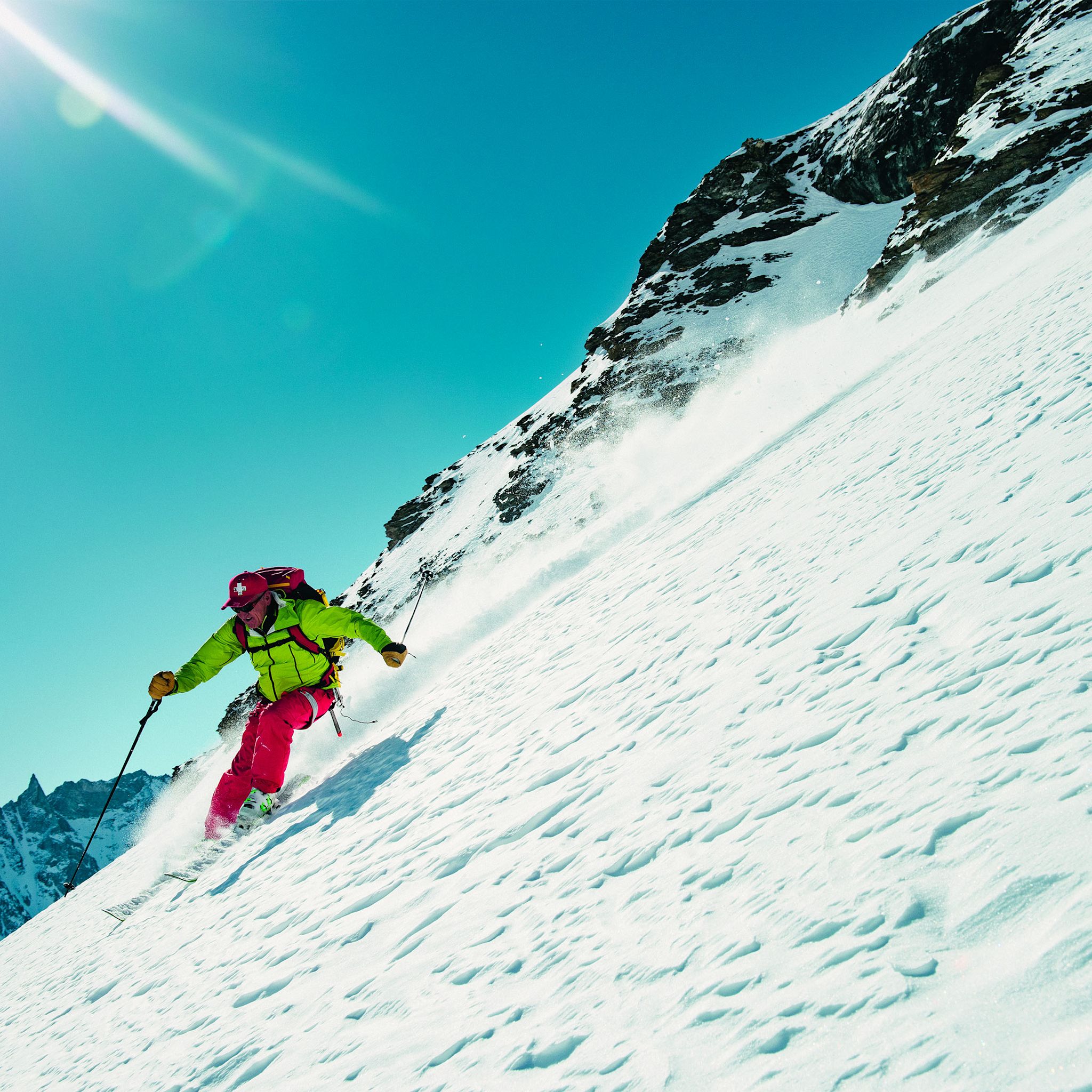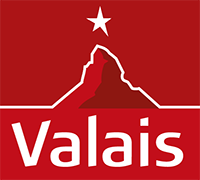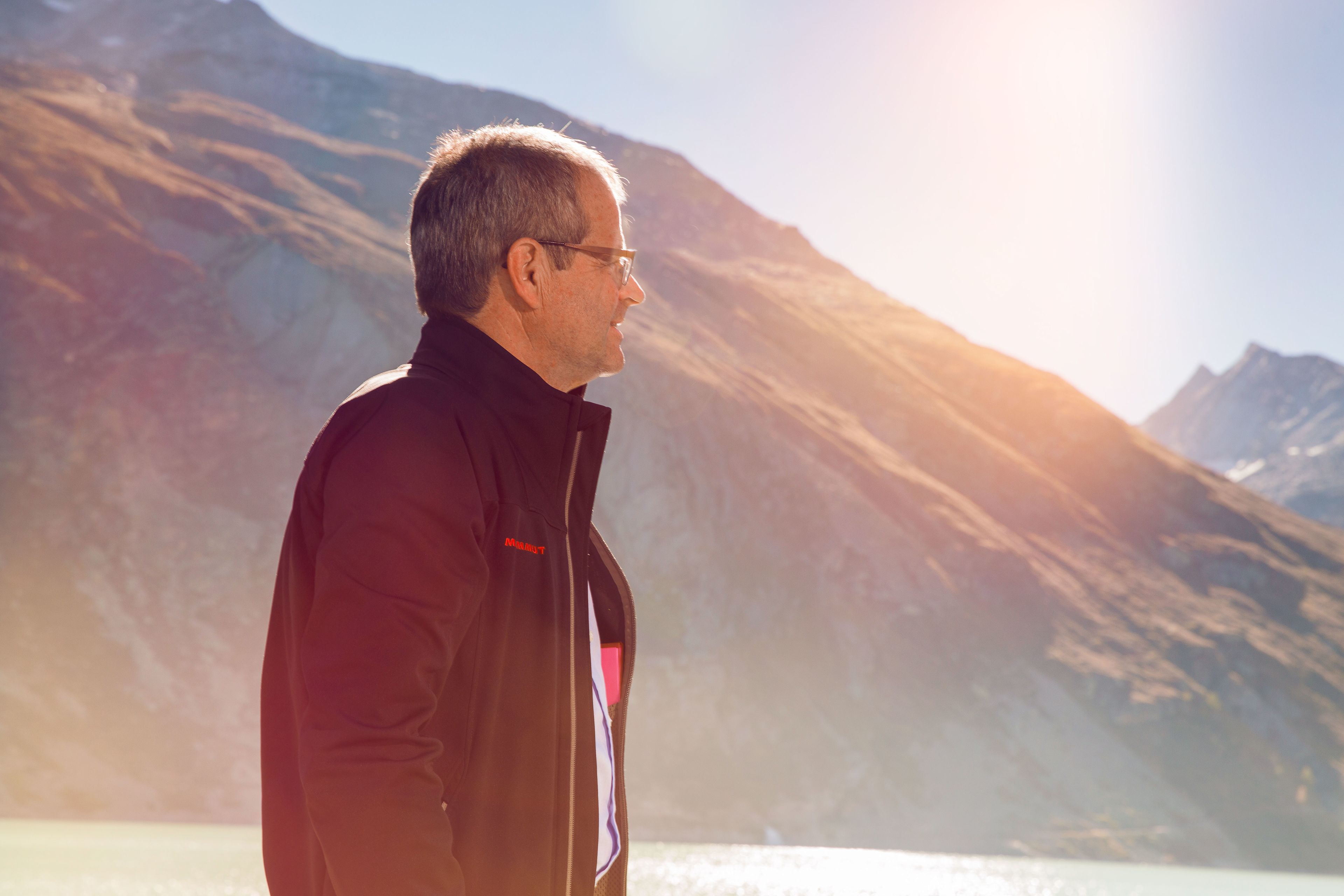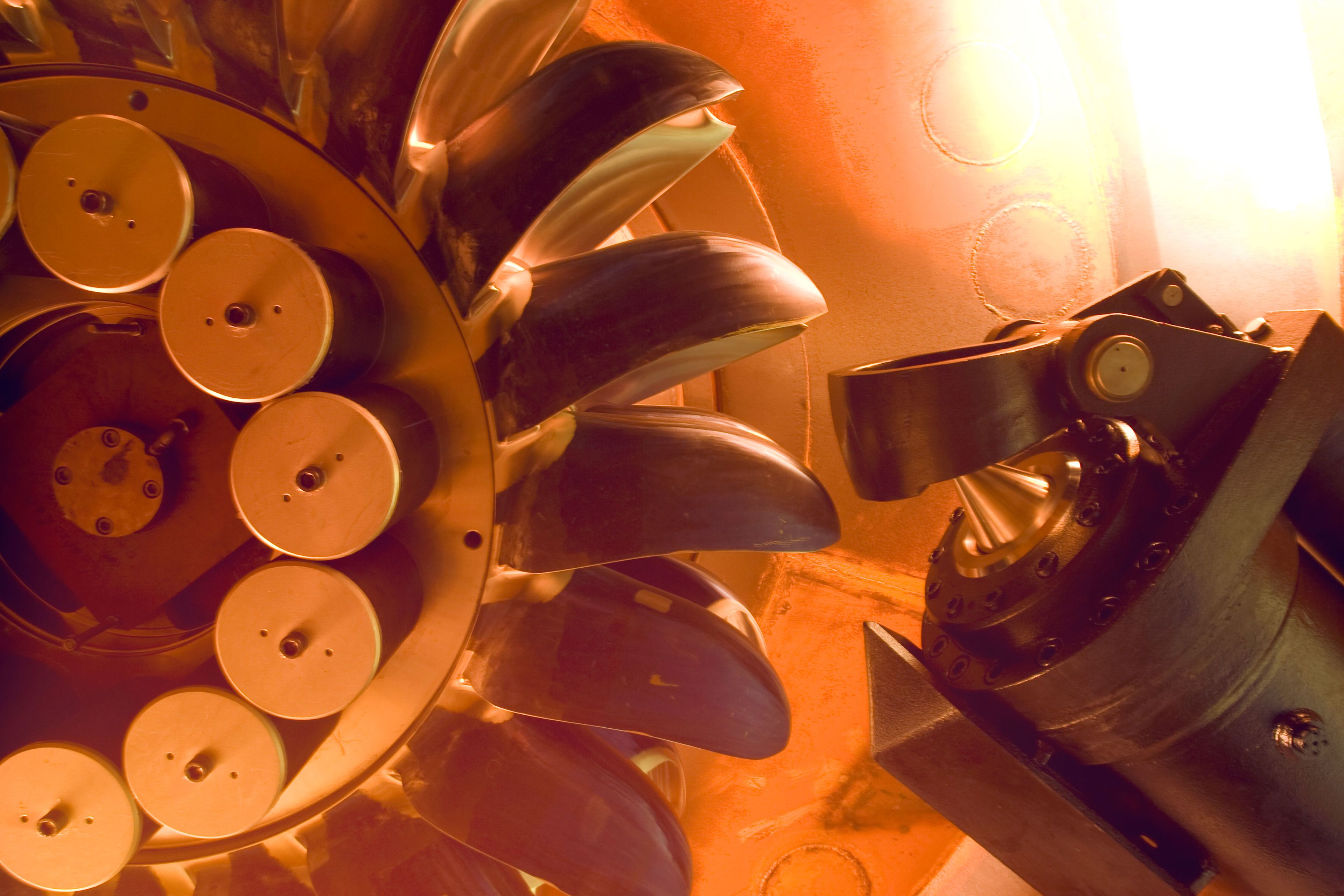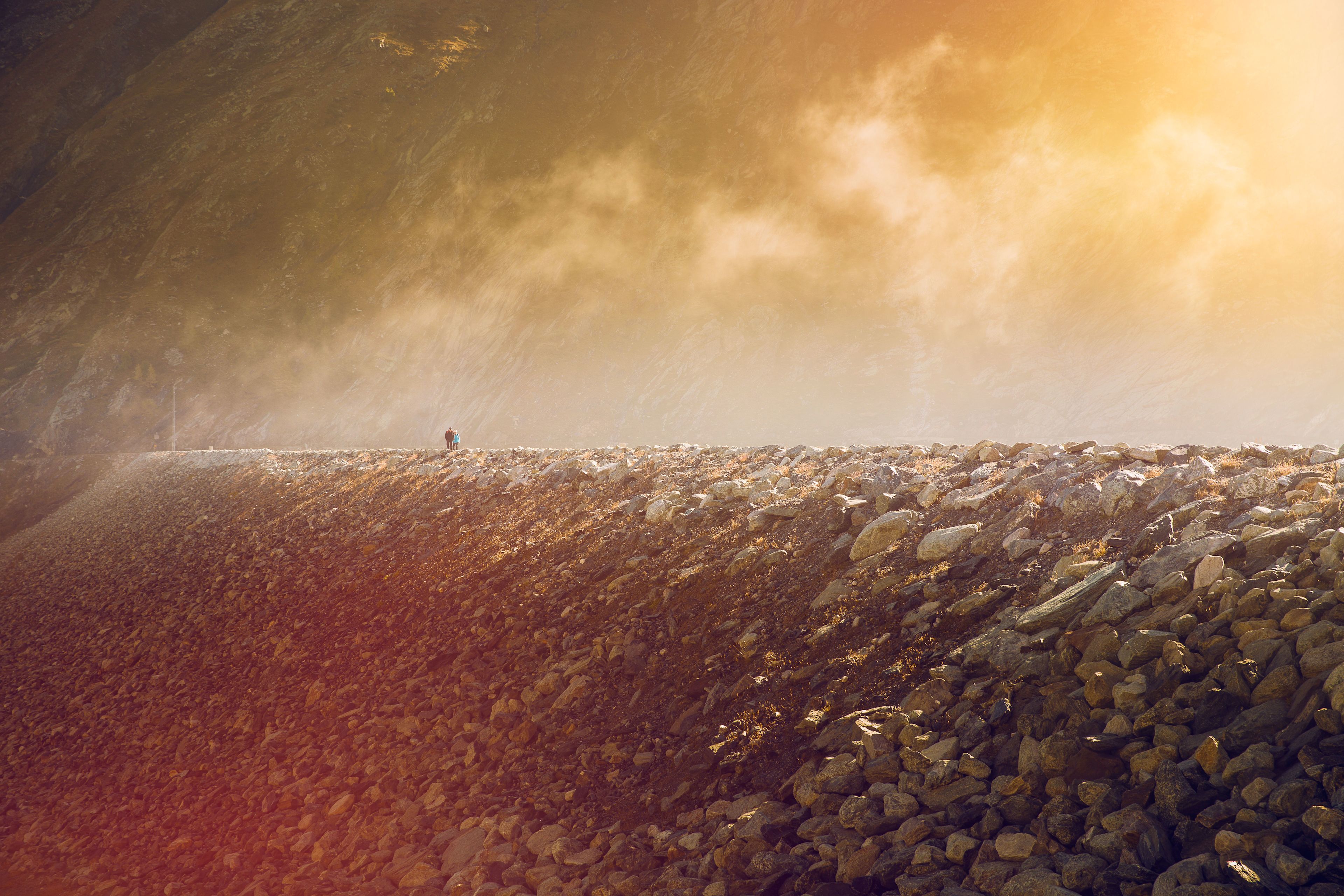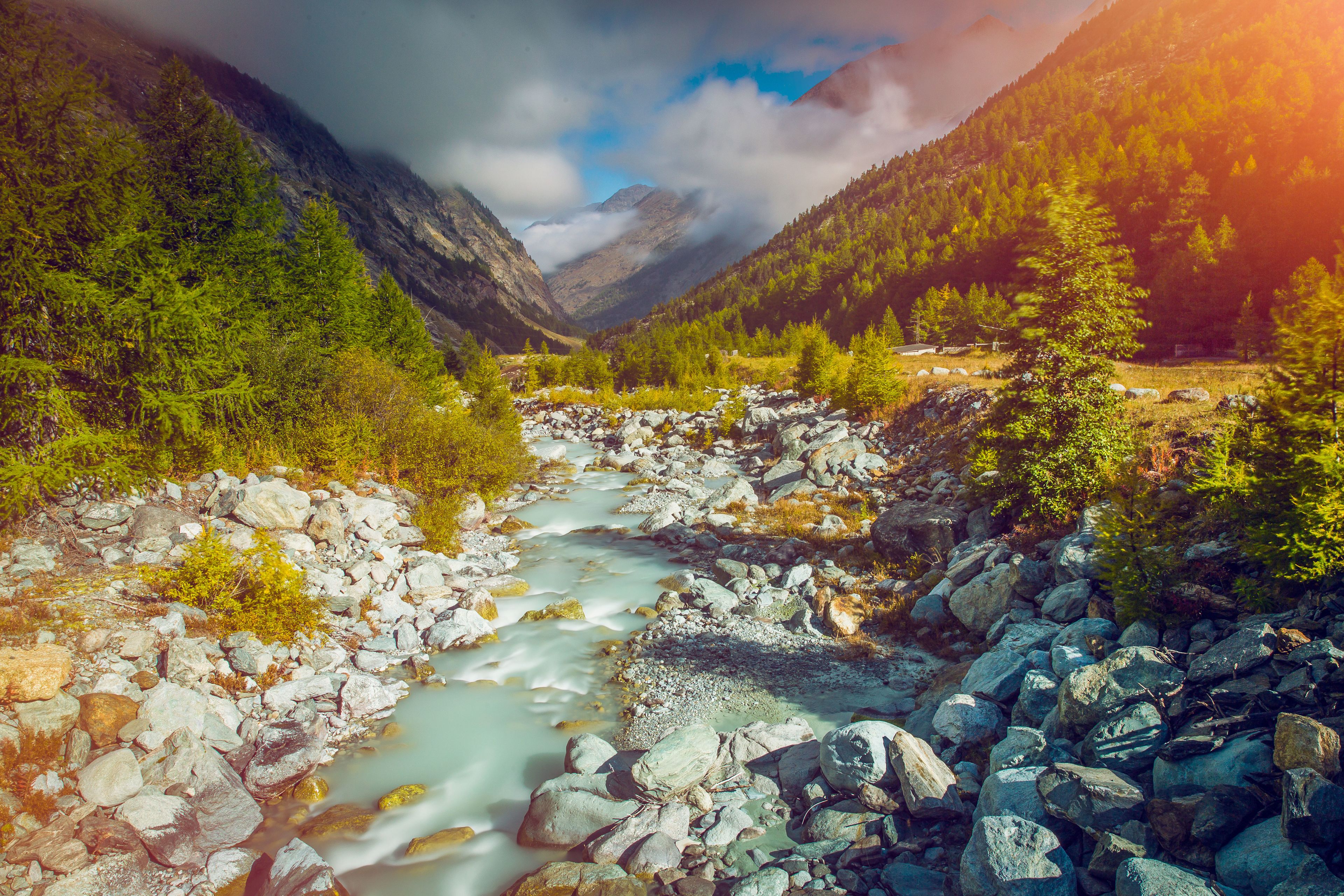The Power of Water
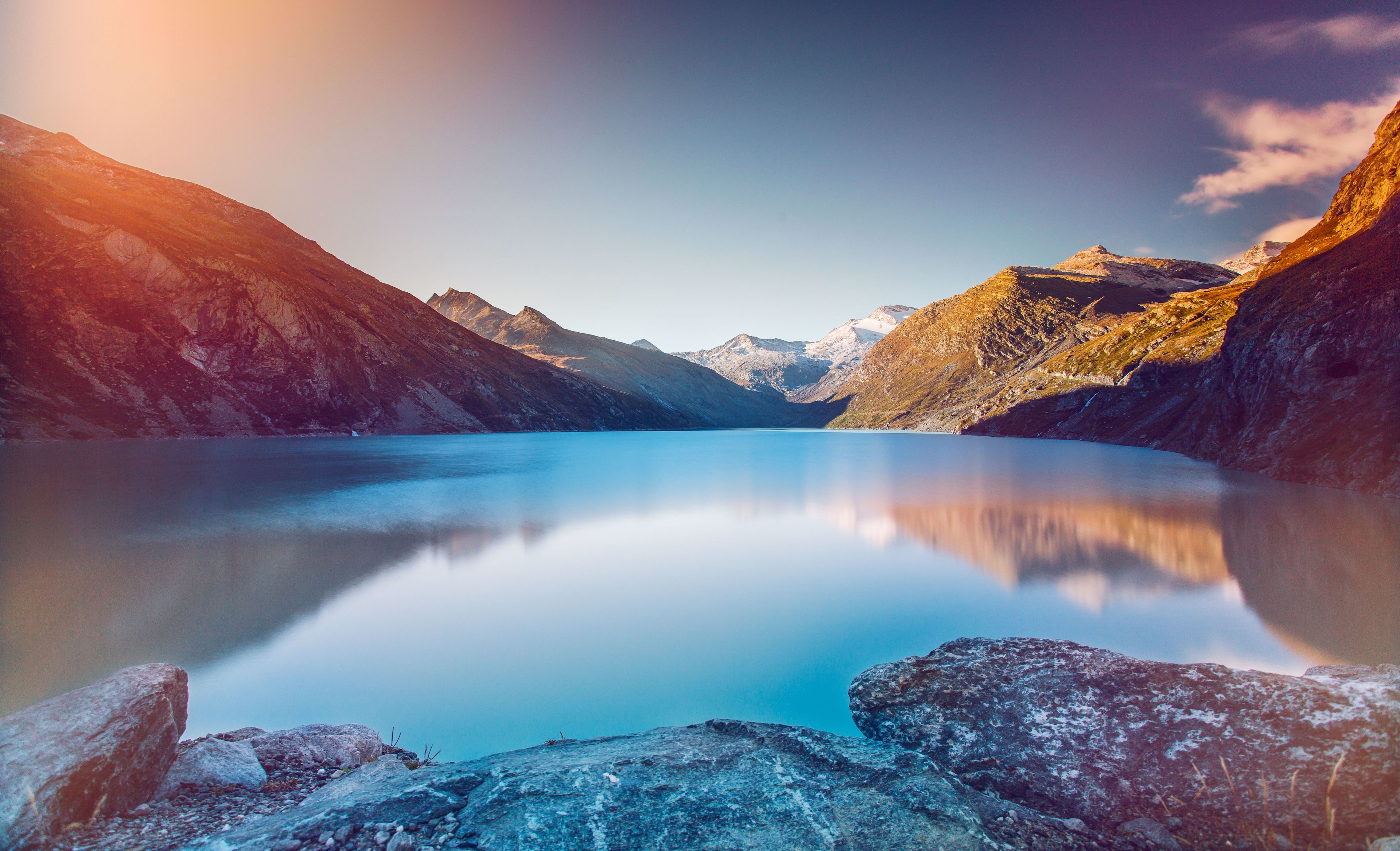
“We’re lucky today. Because when the wind blows – which happens often here – it can get pretty breezy on the crest of the dam.”
Karl Sarbach smiles and lets his gaze wander over the imposing Mattmark barrage at the far end of the Saas Valley. He has been works manager at the Mattmark power plants since 1997. And he adds: “The Valais is predestined for hydroelectric energy production.”
History at your feet
Standing on the crest of the Mattmark dam, you not only enjoy a fabulous view of the mountain panorama, but also find yourself immersed in the history of the dam. Karl Sarbach points to the stony timeline on the ground, marking historic milestones with the key facts of the Mattmark project. “We want people to get to know the history and circumstances surrounding the Mattmark.” A dark chapter was written on 30 August 1965. The tongue of the Allalin Glacier broke away and came crashing down the hill, killing 88 unsuspecting construction workers in their huts. Yet at the same time, the construction of a hydroelectric power station came as a real boon for many mountain valleys in the Valais. This was also true for the Saas Valley. “The valley road was upgraded, bridges and galleries built and many jobs created,” Karl Sarbach explains. “This was a kind of starting shot, as for the first time it allowed the people in the valley to earn money themselves.” At the height of construction, as many as 1300 people were working on all the construction sites for the Mattmark power plants. In 1969, the flow of water was fully blocked off for the first time and the Mattmark barrage facilities were given over to commercial power generation.
Switzerland's reservoir
Nestled in the beautiful natural landscape, the Mattmark dam, the biggest earth-filled dam in Europe, is located at the far end of the Saas Valley. The reservoir and the huge embankment dam are the most visible parts of the Mattmark power generation facilities. The electricity itself is actually produced further down the valley. As Karl Sarbach explains: “The volumes of water stored in the reservoir are used in the Zermeiggern (Saas-Almagell) and Stalden power plants.” Over the year, these two plants produce almost as much electricity as is consumed by all the households in the Valais. This demonstrates convincingly why the Valais is often referred to as Switzerland’s reservoir canton. For besides the Mattmark dam, with its 40 or so other barrages – including the Grande Dixence, the world’s biggest gravity dam – the Valais generates nearly 30 percent of the hydroelectricity in Switzerland. Karl Sarbach sums it up neatly: “We’ve got the water and we’ve got the gradients. The Valais has everything that’s needed for hydroelectric power.” Hence the Valais is home to one of the most traditional and sizeable sources of renewable energy in Switzerland.

Enjoying the hydropower experience
The sun is mirrored in the deep blue of the reservoir, and the mighty mountain peaks that surround the Mattmark region are covered with a sprinkling of snow. A tour bus pulls up next to the restaurant just below the dam. A few people head straight for the Mattmark exhibition, but most set off on the eight-kilometre-long walk round the lake. Karl Sarbach observes the groups for a moment and says: “It’s a perfect trail, even for non-mountaineers. It is virtually level, making it ideal for a hiking or cycling tour, and is connected to the public transport network.” Other power stations in the Valais have also long discovered the potential of the combination of hydropower and tourism. Many dams can be visited and are a great starting point for wonderful walks. Some can even be reached by cable car. The aim is to make hydropower an exciting experience. For in the Valais, they not only know how to exploit this precious commodity – above all, they cherish it.
Skiing to paradise
Next story
